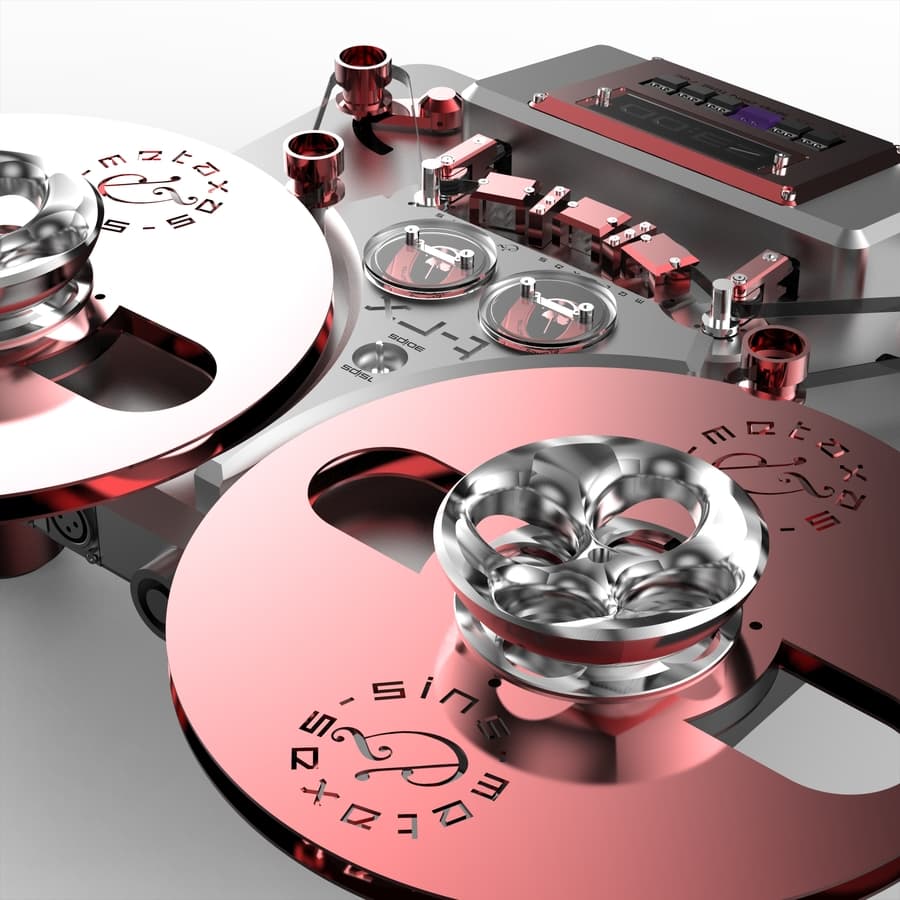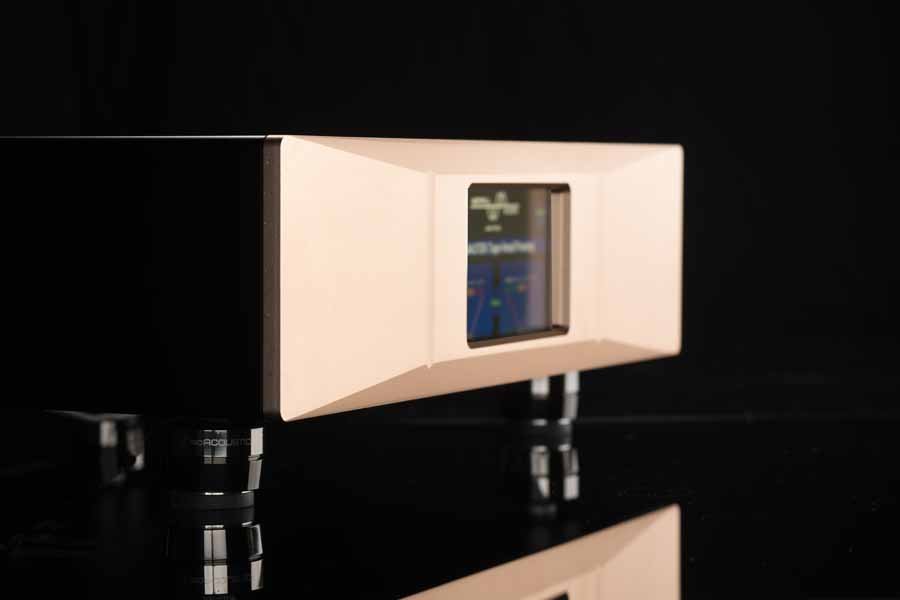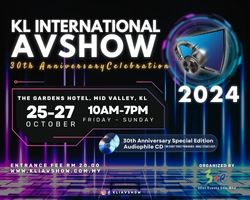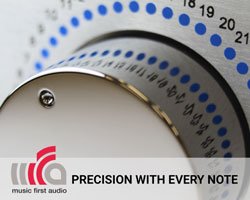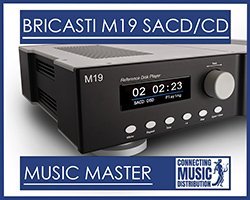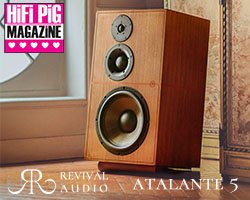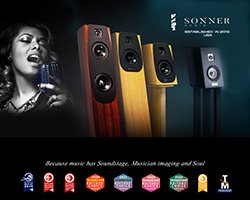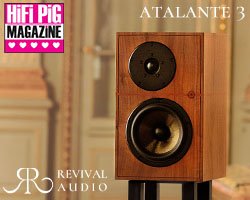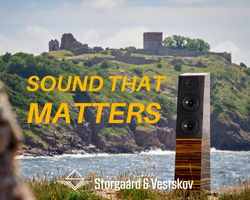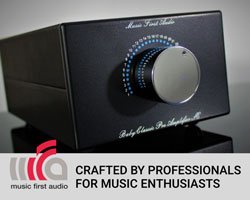The Blues and Abstract Truth, Oliver Nelson, Analogue Productions Ultra Tape ¼”, 15ips, CCIR REVIEW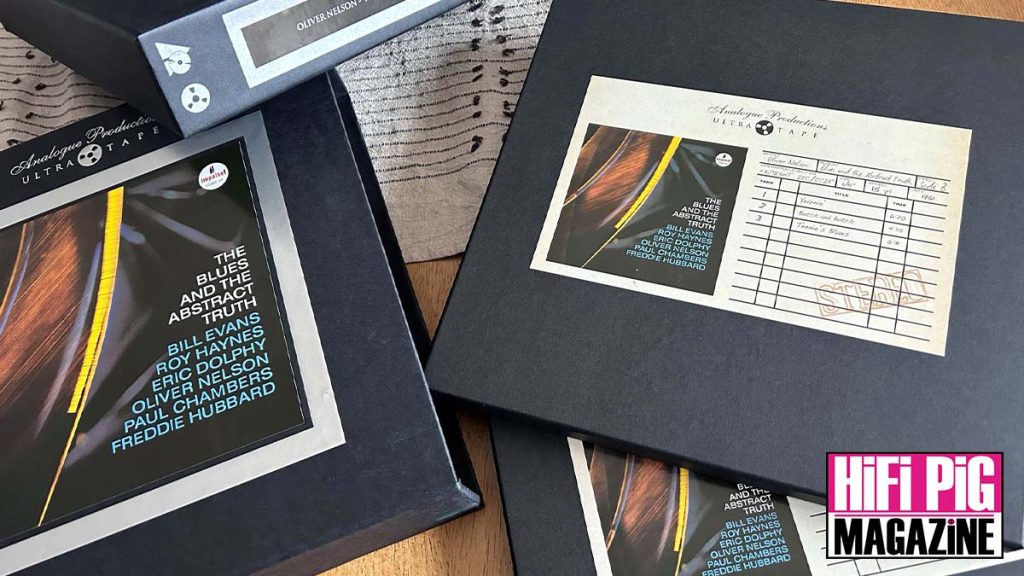
As I try to catch up on several tape reviews, I have stored up in between house move and recent Hifi shows, I have chosen one that has been on the shelf and on my deck here at McIntosh Towers for some months, so is well overdue for the light of day as it were. For any self-respecting jazz fan the thought of an album comprising a quintet of Bill Evans, Roy Hanes, Eric Dolphy, Freddie Hubbard and Paul Chambers is enough to have you reaching for your wallet and your best listening chair – making it a sextet by adding well known big band leader, Oliver Nelson as arranger as well as player is enough to tip most over the edge – but that’s exactly what you have in the 1961 recording of The Blues and Abstract Truth.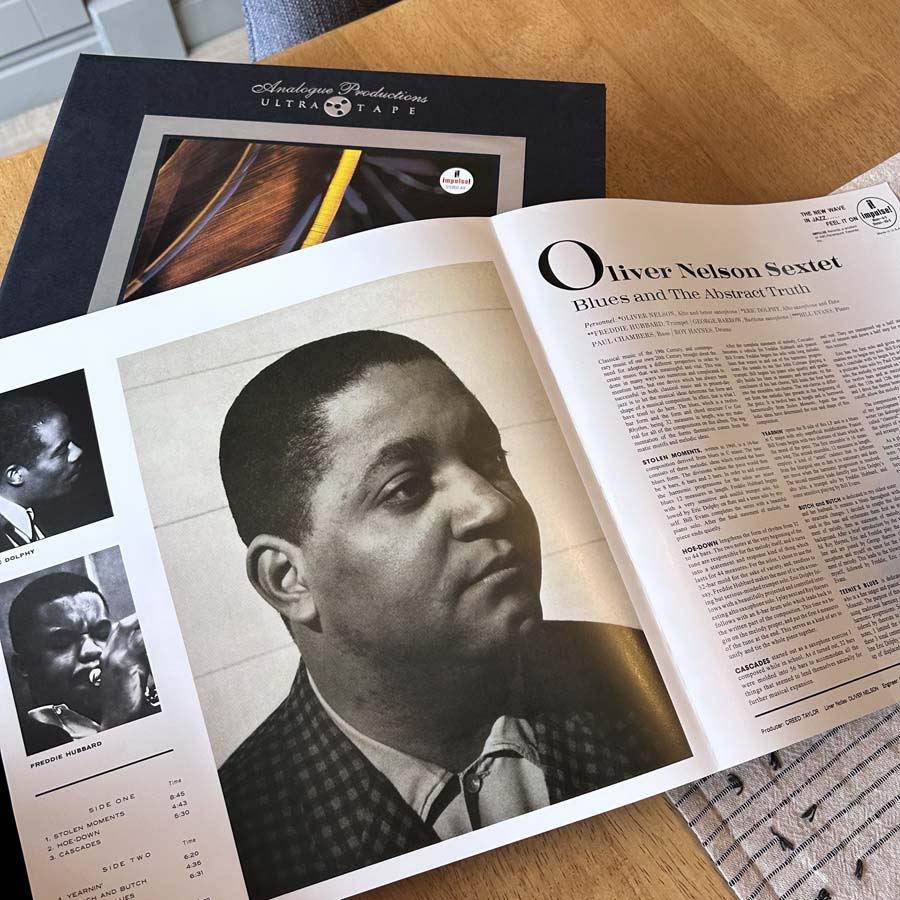
Originally recorded in stereo (a mono vinyl version is also available) for Impulse Records in February of 1961, with the magic fingers, and ears, of one Rudy van Gelder at the helm this is an all-analogue transfer has been recorded real-time on an ATR customised Ampex 102 and is remastered by the eminently skilled Kevin Gray. Having previously owned the brilliant vinyl version of this I was immediately excited to spot it on tape. The packaging and finish are superb in a double-skin thick card outer holding the 2 individually boxed reels and with full-colour cover images, tape-back photos and liner notes as well as Analogue Productions’ own care and handling note.
Taking a slight detour for a moment its worth commenting on the Ampex 100 series itself as despite it being a “vintage”, manufactured circa 1976, it was renowned (based on my research) for its smooth operating and low noise in part due to capstan design as well as the use of forward-looking technology such as ferrite heads and was so successful in the high-end studio market Ampex followed it with the ATR 102 version 2 years later. Reading through Larry Zides’ “The Making of the Ampex 100” in the December 1976 edition of Sound Engineering Magazine really provides insight into the top-class engineering that went into these machines across such aspects as motor and capstan as well as the use of those “advanced” Ferrite heads. These gave multiple benefits at high-speed including consistent running of the tape over the head over time due to reduced wear, less head noise dominating the frequency response and lastly, ferrite heads allowed for sufficiently high bias frequencies to avoid aspects of modulation noise–stepping up recording quality – which for us as listeners all add up to a better dynamic range and realism of recording on tape. For recording engineers other new aspects of tape transport were relished, making it a firm favourite for many.
Detour over (still with me?), let’s dive into the recording itself. A sextet of this level is always going to impress – be is Evans’ piano work, Dolphy’s abstraction, or Hubbard’s trumpet – adding Nelson as arranger and stepping in on both alto and tenor sax means we are now into serious post-bop excellence territory. With blues at the heart of the arrangement Nelson plays with the usual 12-bar structure at times contrasting the 12 measured solos with abstractions in 16, 8 and even 2 bars Nelson tells tell the story of his journey into Jazz as a departure from his more “classical” big band pieces and wow does he do it with aplomb.
Nelson, born in St. Louis Missouri, in 1932, picked up the saxophone at age 11 after initially learning piano. Interestingly, he hails from a very musical family including his brother, also a sax man and his sisters (more of them later). Oliver started arranging around 1950 while touring with Louis Jordan before entering armed service in 1952 and playing woodwinds in the military band which is where, during a tour in Japan, he attended a concert of Ravels Ma Mare l’Oye (Mother Goose in English) performed by the Tokyo Philharmonic Orchestra and it changed his life, and subsequently that of many players back in St. Louis. On his return to Missouri, he started to study music more formally and then to arrange in larger productions with the Harlem Apollo Theatre before working alongside the likes of Count Basie and Duke Ellington. He soon began to record with Prestige Records, but “Blues and Abstract Truth” was his breakthrough and has been rightly hailed as one of the most important albums of the era.
Split across 2 10.5” reels, each with the Analogue Productions Ultra Tape logo you get 6 tracks, totalling just under 40 minutes of a quite unique meeting of players. We lead off with “Stolen Moments, originally written in 1960 as a 16-bar composition derived from blues in C minor which has since gone onto become a jazz standard recorded by everyone from Herbie Mann to Frank Zappa. Freddie Hubbard opens with a beautiful and soft soulful trumpet piece before Dolphy takes the helm on flute. For fans of Dolphy’s later work such as Out to Lunch (1964, Blue Note) this is a less abstract, more melodic take but carries that Dolphy energy still and adds air and foot-tapping energy to the piece wonderfully. Dolphy sounds set back in the recording somewhat but nonetheless shines. Nelson’s tenor solo follows, and it does make me wonder why I don’t know more of him, a deft player with a real soulful style he hands off to the unmistakable Bill Evans like his counterparts taking his wonderful solo in Minor Blues fashion before the crew join in to take us to a soft quiet finish.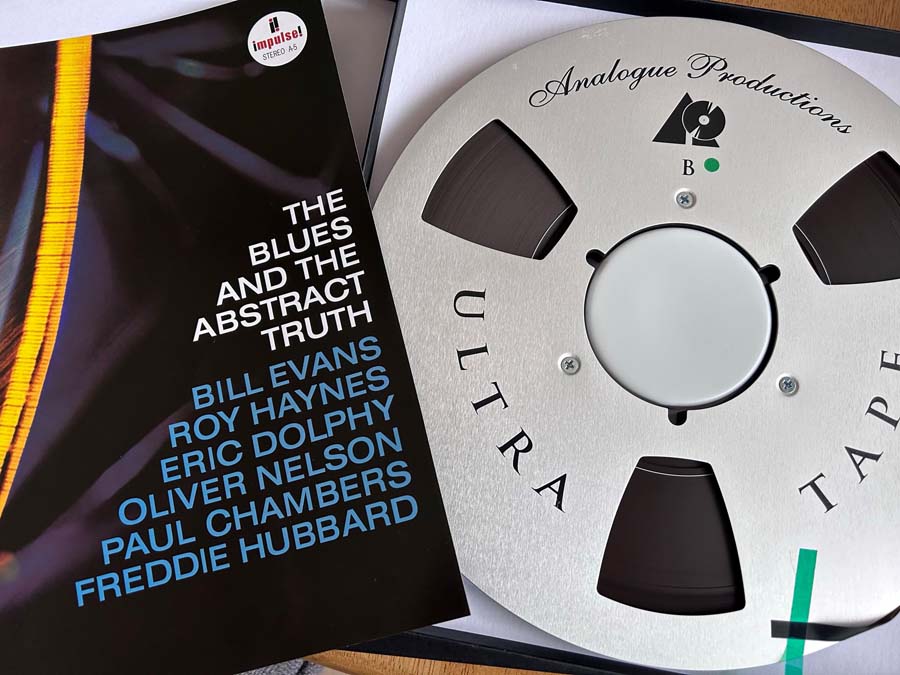
With an unexpected female vocal calling “Hoe Down, 1,2,1,2,3,4” followed by the sharp 2-note trumpet call from Hubbard we crash into an incredibly upbeat 44-bar rhythm, somewhat call and response formatted number next with “Hoe-Down”. After the incredibly fun opening, we have a playoff between solos of Hubbard with superb trumpet work and Dolphy this time on alto sax with a more familiar sound for fans. Nelson follows, that 2 note based abstraction in full swing before the constant sideman Roy Haynes takes an 8 bar drum solo of sublime breaks before we complete on the 4 measures we heard at the intro – beautiful full circle work!
With “Cascades” we get a strong centre of Bill Evans and Freddie Hubbard. Nelson writes in the liner notes that Hubbard sounded like “John Coltrane playing a Trumpet” – this is high praise indeed, but I do think its warranted, he really is a master of the horn on par at times to my favourite trumpeter Lee Morgan. Evans builds pace and presence through his solo until we move into a horn ensemble of Dolphy, Hubbard, Nelson, and George Barlow (uncredited on the cover) who is supporting on baritone saxophone. Haynes and Chambers provide the continuous groove of drums and bass which means you just can’t stop nodding along to the rhythm.
For the sake of brevity side B (or the second tape) is an equally rich and exciting trio of tracks. “Yearnin’” a blues take starts off with 2 choruses from Evans before two superb ensembles, one in 16 measures and the second in 12, leading finally into solos from Eric Dolphy, Freddie Hubbard and Evans respectively. For me you can hear some of the future Dolphy emerging more and more on Yearnin’ and the playing from all is brilliant. The penultimate “Butch and Butch” which was dedicated by Nelson to his elder sister and her husband is a solid Blues number constructed as first a melody statement comprising the work of Dolphy and Hubbard, then a “melody with background” (in for form of both Nelson and Barrow). Tonnes of energy and brass to be had, a great build of players culminating with Evans taking us to the finish with his usual skill and finesse.
Before, it feels, we even got started we head to the finish with the wonderfully titled “Teenies Blues” this time a dedication to Nelson’s junior sister who, to quote the man himself, is “a fine singer and pianist”. Cymbals, brush and bass set us off and it’s great to hear the bass get some more airtime to show what an incredible (but often overlooked) hard-bop bassist Paul Laurence Dunbar Chambers jr. (to give him his full title) was. Prolific through the ’50s and 60’s before his sad death in ’69 at the very young age of 33 from Tuberculosis (a complication following hospitalisation and coma brought on by his struggles with substance abuse). Originally a tuba player he switched to double bass (thank goodness) in 1949 he is most known as a sideman, playing on over 100 albums not to mention the dozen or so as leader. He was well respected and rightfully so, appearing in Miles Davis’s first quintet from ‘55-’63.
Overall, the sound quality of Blues and Abstract Truth is incredibly high, mastering seems to have been conducted to preserve the soul and emotion of the works, as well as the tempo, flair and passion but has not sought to change some foibles such as player placement in the soundstage which today may at times sound out of balance (Dolphy’s “set back” presence for example). All of this adds up to a fantastically engaging listening experience and Analogue Productions can be comfortable they have produced a superb recording here. This was the top of my choice list of the Ultra tapes being a great album anyway and listening has only reinforced my decision. Presentation and reel quality, including pre-added leader tape only enhances the value. A must-listen!
Track Listing & Timing
Tape A
Stolen Moments 8:45
Hoe -Down 4:43
Cascades 5:30
Tape B
Yearnin’ 6:20
Butch and Butch 4:35
Teenies Blues 6:31
Total running time 36:24
The Blues and Abstract Truth by Oliver Nelson, along with other titles, is available from Acoustic Sounds in the US for $450 + associated import taxes and shipping to your country of choice.










































